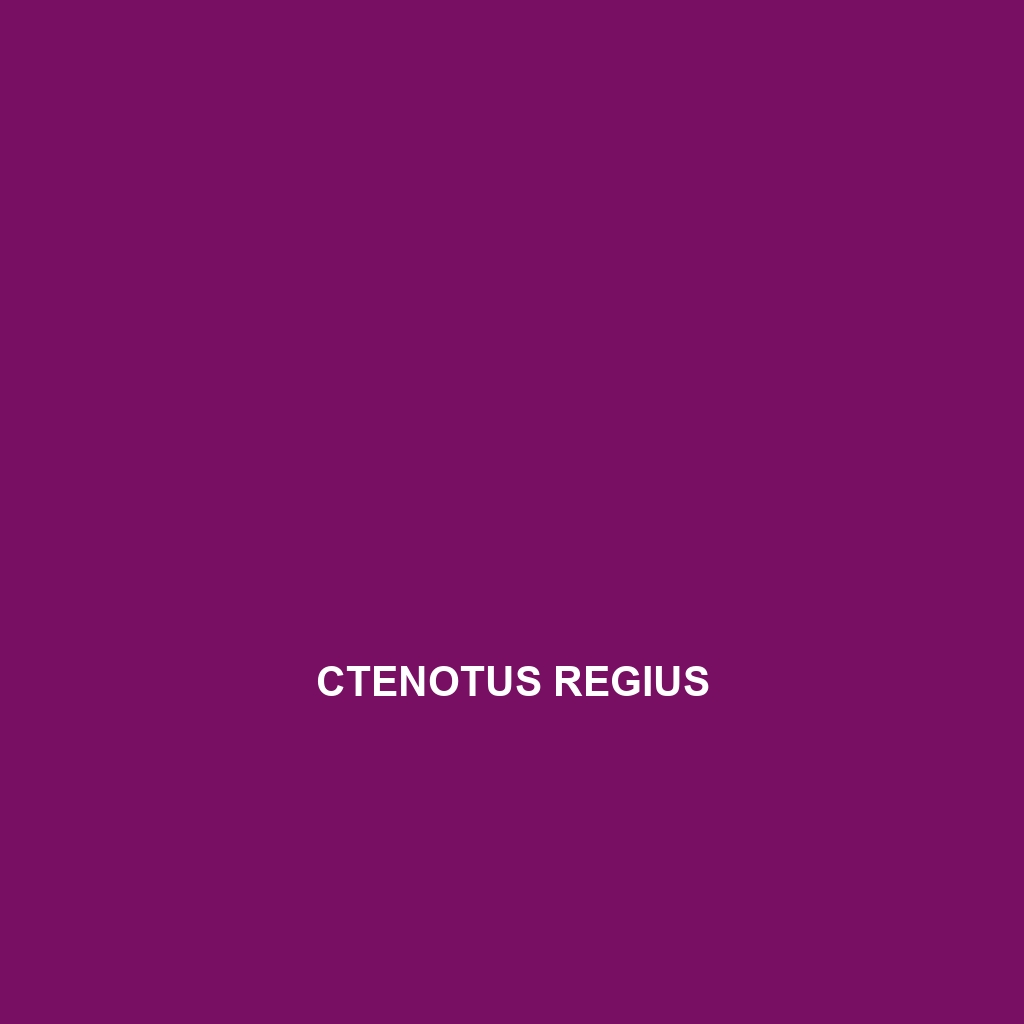Species Description: Ctenotus regius
Common Name: Ctenotus regius
Scientific Name: Ctenotus regius
Habitat
Ctenotus regius, commonly known as the royal ctenotus, is primarily found in the arid and semi-arid regions of Australia. This species inhabits a variety of environments, including spinifex grasslands, sand dunes, and rocky outcrops. It is often located in areas with sparse vegetation, where it can bask in the sun and retreat to crevices for shelter. Geographic distributions are concentrated in the central and western parts of the continent.
Physical Characteristics
Ctenotus regius is a slender-bodied lizard, typically growing to a size of 10 to 15 cm in total length. Its coloration varies across populations but generally features a combination of sandy brown to olive green tones, often with distinctive darker stripes or blotches along its back. The lizard possesses a pointed head, elongated limbs, and a long tail, which aids in balance and agility. The coloration and patterns provide camouflage against the arid soil and vegetation in its habitat.
Behavior
The royal ctenotus exhibits diurnal behavior, being most active during the daytime. This lizard is known for its quick movements and agility, often darting into burrows or under rocks when threatened. Ctenotus regius demonstrates territorial behavior, especially during the mating season, where males will display and engage in combat to attract females. It also engages in basking to regulate its body temperature, critical for its metabolic processes.
Diet
Ctenotus regius is an insectivorous lizard, primarily feeding on a diet consisting of various insects, including beetles, grasshoppers, and ants. It may also consume small invertebrates and occasionally plant matter. Its feeding habits are crucial for controlling insect populations within its ecosystem, making it an important predator.
Reproduction
The reproductive season for Ctenotus regius typically occurs in the warmer months, from spring to early summer. Females lay clutches of around 4 to 10 eggs, which they bury in sandy soils. The eggs incubate for several weeks before hatching, with offspring emerging fully formed and capable of immediate independent life. Parental care is minimal, but mothers utilize camouflage to protect their nests.
Conservation Status
Ctenotus regius is currently classified as “Least Concern” according to the International Union for Conservation of Nature (IUCN). However, habitat destruction and climate change pose potential threats to its populations. Conservation efforts focus on preserving its natural habitat and mitigating environmental changes that may impact its survival.
Interesting Facts
Ctenotus regius is one of the more colorful species within the Ctenotus genus, with unique patterns that vary significantly between different populations. Additionally, this species has adapted well to its harsh environment, making it a fascinating subject of study among herpetologists.
Role in Ecosystem
Ctenotus regius plays a vital role in its ecosystem as both a predator and prey. As an insect eater, it helps maintain insect populations, while also serving as a food source for larger predators, such as birds of prey and snakes. Its activities contribute to nutrient cycling within the arid environments it inhabits.
This structured description is designed to be informative and engaging, incorporating relevant keywords to optimize search engine visibility for Ctenotus regius.
